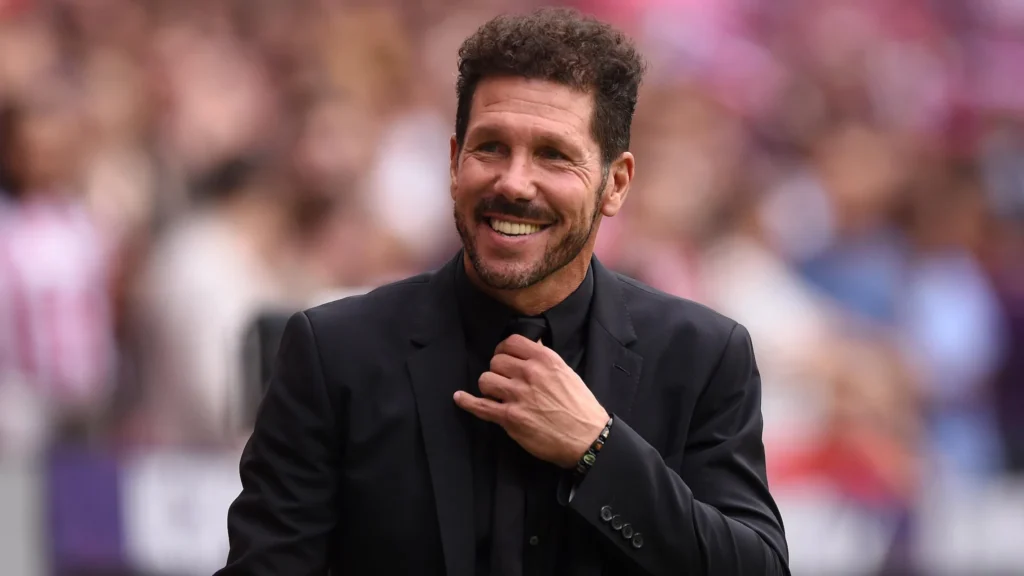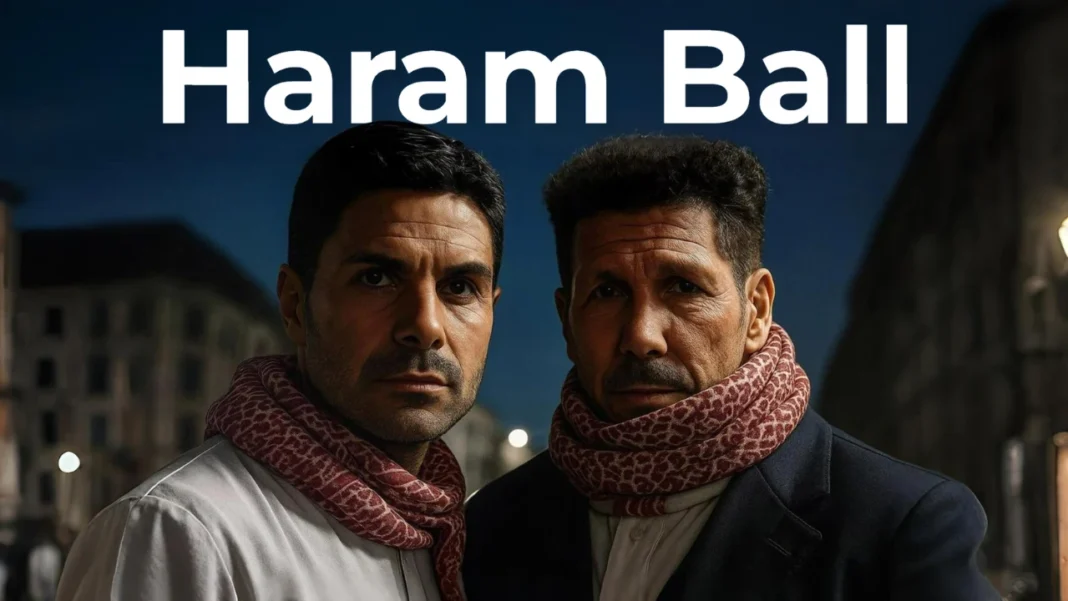If you’ve spent even a little time on football Twitter or scrolled through memes after a boring 0-0 Champions League game, you’ve probably seen the term Haram Ball.
haram ball derby tomorrow…. pic.twitter.com/qDjXzNZnwv
— memerian (@memerianlol) October 20, 2025
Recently, when Atletico Madrid faced Arsenal in the Champions League, fans jokingly called it the “Haram Ball Derby.” Edits of Mikel Arteta and Diego Simeone flooded social media, with captions like…. You get it right.
But what exactly is Haram Ball? Why is it suddenly everywhere? And why are some fans calling managers like Simeone, Mourinho, and Arteta the pioneers of it?
Let’s break it down.
So, What Is Haram Ball?

Let’s make one thing clear: “Haram Ball” isn’t an official football term. You won’t find it in any coaching manual or FIFA textbook. It’s a slang term invented by fans, mostly as part of football banter to describe teams that play extremely defensive or pragmatic football.
In simple terms, Haram Ball is when a team’s main focus isn’t scoring goals but stopping the opponent from scoring. Think of it as “park the bus” football, but with a bit more grit, drama, and chaos.
It’s the opposite of beautiful football or tiki-taka. It’s about getting results by any means necessary, even if it means giving up 80% possession and having your striker defend on the halfway line.
Why “Haram”?
The word “haram” comes from Arabic, meaning “forbidden.” But in football culture, fans use it in a playful way, implying that the kind of football being played is so ugly, so anti-aesthetic, that it feels “forbidden” to watch.
So when a team sets up with ten men behind the ball, clears every cross into Row Z, and celebrates a 0-0 draw like they just won the World Cup, fans sarcastically say, “That’s Haram Ball at its finest.”
It’s not really an insult anymore; it’s become a badge of honor. A celebration of the dark arts of football.
The Philosophy Behind Haram Ball
While it might look like “anti-football,” Haram Ball is built on a very clear philosophy: defend deep, frustrate the opponent, and punish them on the counter.
It’s about discipline, shape, and mental toughness. The idea is simple: you don’t have to dominate possession to dominate the result. You just need to survive, suffer, and strike when it matters.
Here’s what usually defines Haram Ball:
- Deep defensive blocks: The backline sits low, often right outside the penalty box.
- Compact structure: The team defends as a unit, leaving no spaces between midfield and defense.
- Aggressive pressing in bursts: Instead of constant pressing, Haram Ball teams wait for the perfect moment to pounce.
- Counter-attacks: Once the opponent overcommits, they hit back quickly, usually with pacey wingers or a target man.
- Set-pieces as weapons: Corners and free-kicks become crucial opportunities to score.
It’s football stripped down to its rawest form, no overcomplicated tactics, no fancy triangles, just pure survival and strategy.
The Pioneers of Haram Ball
 Now that we know what Haram Ball is, let’s talk about the managers who turned it into an art form.
Now that we know what Haram Ball is, let’s talk about the managers who turned it into an art form.
Jose Mourinho – The Original Master
If anyone wrote the rulebook for Haram Ball, it’s Jose Mourinho. His 2010 Inter Milan side parking the bus at Camp Nou against Barcelona is still the stuff of legend. Mourinho didn’t care about possession or xG, only about winning. That night proved you can defend your way to glory and still conquer Europe.
Diego Simeone – The Modern Icon
If Mourinho invented it, Simeone perfected it. His Atletico Madrid teams are built on grit, structure, and pure suffering. They defend as one, attack in bursts, and turn every 1-0 win into a tactical masterpiece. For Simeone, beauty lies in hard work, not in flair.
Mikel Arteta – The New-Age Disciple
Arteta’s Arsenal aren’t full-time Haram Ball merchants, but they know when to get dirty. Especially in Europe, they’ve shown a pragmatic side, staying compact, grinding results, and frustrating even the best. It’s Pep’s student mastering the art of controlled chaos.
And of course, others like Sean Dyche, Thomas Tuchel, and Antonio Conte have kept the spirit alive, each in their own way, proving that discipline will always have a place in football.
Why Fans Secretly Love Haram Ball
Let’s be honest, everyone complains about Haram Ball when their team is on the receiving end of it. But when does it work for your team? It’s glorious.
There’s something deeply satisfying about watching your team dig deep, defend like their lives depend on it, and snatch a 1-0 win against a “superior” side. It’s football’s equivalent of a heist movie.
That feeling when your keeper makes a 94th-minute save, or your striker wins a foul just to kill time, that’s the essence of Haram Ball. It’s not about dominating the game; it’s about surviving it.
Is Haram Ball Bad for Football?
That depends on how you look at it. Critics argue that Haram Ball kills entertainment, that it’s anti-football. They say fans want goals, flair, and creativity, not 11 players behind the ball.
Exclusive 💣
We understand TV companies 📺 are actually complaining about Premier League ⚽️ teams relying too much on set pieces and long throw-ins to win games.
They’re saying it’s ruining the excitement of the game and turning fans off.
They want teams to change their… pic.twitter.com/H5HRMkQcfJ
— indykaila News (@indykaila) October 28, 2025
But the truth is, football has always been about balance. For every team that plays beautiful attacking football, there’s one that plays the opposite, and that contrast is what makes the sport interesting.
Tactics evolve, styles clash, and every philosophy has its place. Just like “tiki-taka” revolutionized football, Haram Ball represents its rebellion.
Because at the end of the day, whether it’s Guardiola’s possession machine or Simeone’s defensive fortress, everyone is chasing the same thing: victory. The route doesn’t matter. The result does.
The Final Word
Haram Ball started as a meme, a term thrown around to mock defensive football. But over time, it’s become a part of football culture, a symbol of tactical discipline and resilience.
So, next time you see a team defend with everything they have, block shots with their faces, and celebrate tackles like goals, don’t roll your eyes. Appreciate the art of suffering.
Because that, my friend, is Haram Ball at its finest.
And honestly, football wouldn’t be half as fun without it.


